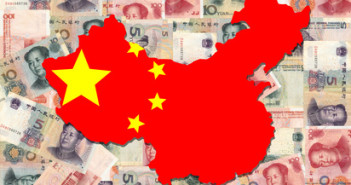Evidence continues to pile up that China is experiencing a bust of of its housing bubble. Prices aren’t only “coolingâ€, but are plunging.
Earlier in the year, reports about suicides and disappearances of developers in fright of loan sharks seemed a bit too colorful. Some numbers provide hard facts. This already impacts commodity prices and could push them and the Aussie even lower.
The well respected real estate outlet Global Property Guide reports (emphasis mine)
…according to the China Real Estate Index System (CREIS).  In Beijing, new apartment prices were 13.45% down y-o-y to October 2011, after rising 18% during 2010.  Shanghai experienced a much smaller price-drop of 0.39%, according to the National Bureau of Statistics of China (NBSC).
In the 4th quarter, the downward trend is intensifying. In fact each month, for several months, more regions have reported falling house price, and fewer regions have reported rising prices.
This is a very cautious report, especially regarding Shaghai. A separate report in the L.A. Times colors a much darker picture about this city: a 40% drop from the peak in 2009.
Home prices nationwide declined in November for the third straight month, according to an index of values in 100 major cities compiled by the China Index Academy, an independent real estate firm. Average prices in the Shanghai area are down about 40% from their peak in mid-2009, to about $176,000 for a 1,000-square-foot home.
Thanks to Mish for pointing out this article, and also a report about a deserted fake Disneyland, 45 minutes outside of Shanghai.
What are the exact numbers? It’s hard to know, but the general picture is clear:  China saw soaring prices, built too much and is now experiencing a bust. It happened in the US, in Spain and in many other places. This housing bust is now strongly felt in the world’s No. 2 economy.
So at least in house prices, China is experiencing quite a rough landing – not soft at all. There are already signs of a capital flight out of China, and reasons for weaker yuan, not a stronger one that the US wants.
If this indeed intensifies, Australia could suffer from less demand for its commodities, iron ore being the main one. The Australian dollar has experienced extreme volatility of late and is still clinging to parity with the US dollar.
For how long? See more about the Aussie in the Australian dollar forecast.



